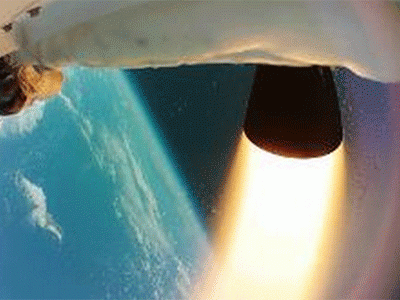Nasa Vehicle Paves Way for Large Payload
A saucer-shaped test vehicle launched by Nasa tested breakthrough technologies that may enable large payloads to be safely landed on the surface of Mars.

A saucer-shaped test vehicle launched by Nasa tested breakthrough technologies that may enable large payloads to be safely landed on the surface of Mars.

It will also allow access to more of the planet's surface by enabling landings at higher altitude sites, Nasa said.
The Low-Density Supersonic Decelerator (LDSD) project successfully flew a rocket-powered, saucer-shaped test vehicle into near-space in late June from the US Navy's Pacific Missile Range Facility on Kauai, Hawaii.
"A good test is one where there are no surprises but a great test is one where you are able to learn new things, and that is certainly what we have in this case." said Ian Clark, principal investigator for LDSD at Nasa's Jet Propulsion Laboratory in Pasadena, California.
"Our test vehicle performed as advertised. We are literally re-writing the books on high-speed parachute operations, and we are doing it an year ahead of schedule," Clark added.
The goal of this experimental flight test, the first of three planned for the project, was to determine if the balloon-launched, rocket-powered, saucer-shaped, design could reach the altitudes and airspeeds needed to test two new breakthrough technologies destined for future Mars missions.
Carried as payload during the shakeout flight were two cutting-edge technologies scheduled to be tested next year aboard this same type of test vehicle.
IANS
